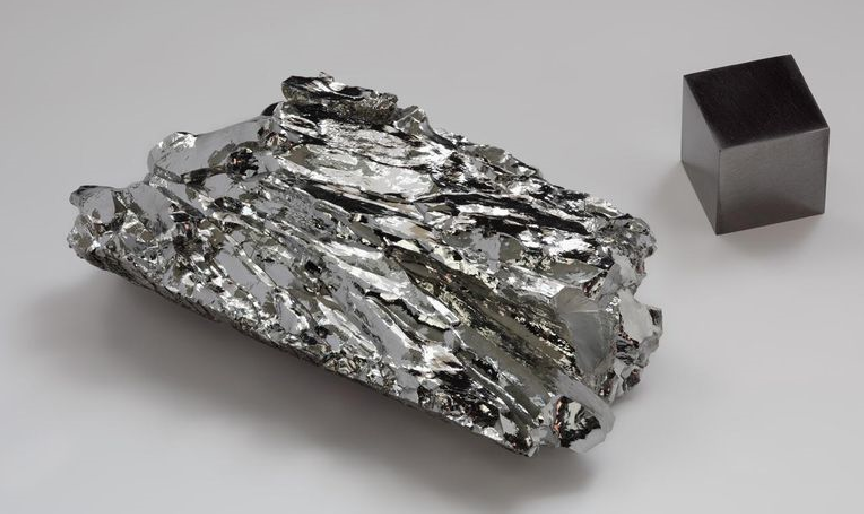What Are the Characteristics of Refractory Metal?

What are the Characteristics of Refractory Metal?
Want to know the characteristics of refractory metal? Then you've come to the right place. In this article, we'll talk about the characteristics of refractory metal. First, let's take a look at the definition of the refractory metal.

Characteristics of Refractory Metal
Definition of Refractory Metal
Refractory metals are referred to metals with melting points over 3632°F and certain amounts of reserves, including tungsten, tantalum, molybdenum, niobium, hafnium, chromium, vanadium, zirconium, and titanium.
Usually, refractory metals have great densities and weigh heavily. With refractory metal as a matrix, the alloys added with other elements are called refractory metal alloys. Refractory metal has good high-temperature strength as one of its most important strengths.
Besides, it also has good corrosion resistance to molten alkali metal and steam. However, bad oxidation resistance at a high temperature is the major weakness of refractory metal.

Characteristics of Refractory Metal
Properties of Refractory Metals (Data Table)
|
Property |
W |
Mo |
Nb |
||
|
Melting Point (°C) |
3,422 |
2,623 |
3,017 |
2,477 |
3,186 |
|
Density (g/cm³) |
19.25 |
10.28 |
16.65 |
8.57 |
21.02 |
|
Thermal Conductivity (W/m·K) |
173 |
138 |
57 |
54 |
48 |
|
Electrical Resistivity (Ω·m) |
5.3 × 10⁻⁸ |
5.7 × 10⁻⁸ |
13.5 × 10⁻⁸ |
15.2 × 10⁻⁸ |
19.3 × 10⁻⁸ |
|
Tensile Strength (MPa) |
1,510 (pure) |
550 (pure) |
340 (pure) |
275 (pure) |
1,070 (pure) |
|
Corrosion Resistance |
Excellent in acids |
Good in acids |
Exceptional in acids |
Good in acids |
Good in acids |
|
Oxidation Resistance |
Poor above 500°C |
Poor above 600°C |
Good below 300°C |
Good below 200°C |
Good below 400°C |
|
Ductile- Brittle Transition Temp. (°C) |
~200 (pure) |
~-20 (pure) |
~-196 (pure) |
~-196 (pure) |
~-196 (pure) |
|
Applica -tions |
Filaments, alloys |
Aerospace, electronics |
Capacitors, implants |
Superconductors, alloys |
Jet engines, catalysts |
Key Characteristics of Refractory Metals
1. High-Temperature Strength
-
Refractory metals maintain excellent mechanical strength and structural integrity at high temperatures, making them ideal for applications in extreme environments.
2. Corrosion Resistance
-
They exhibit strong resistance to corrosion, particularly from molten alkali metals and steam. However, they are prone to oxidation at high temperatures.
3. Low-Temperature Brittleness
-
Refractory metals like tungsten and molybdenum tend to become brittle at low temperatures but become ductile at high temperatures. The Ductile-Brittle Transition Temperature (DBTT) is a critical factor influenced by material purity, alloy composition, and processing methods.
-
Solutions to reduce DBTT include adding alloying elements (e.g., rhenium to tungsten) and optimizing processing techniques.
4. Oxidation Resistance
-
While refractory metals are stable at room temperature, they oxidize rapidly at high temperatures. For example:
-
Tungsten and molybdenum oxidize above 752°F, forming WO₃ and MoO₃.
-
Tantalum and niobium oxidize above 536°F and 392°F, respectively, forming Ta₂O₅ and Nb₂O₅.
-
Titanium and zirconium oxidize rapidly above 1,112°F and can even ignite in powder form.
-
-
To address oxidation, antioxidant alloys and protective coatings are used, though high-temperature oxidation remains a challenge.
5. Reaction with Hydrogen
-
Tungsten, molybdenum, and rhenium do not react with hydrogen, but their oxides can be reduced to metal using hydrogen at specific temperatures.
-
These metals can absorb hydrogen, becoming brittle and forming hydrides at 572°F to 932°F. In high vacuum conditions, the absorbed hydrogen is released.
-
This property is utilized in producing alloy powders of titanium, zirconium, tantalum, and niobium.
6. Corrosion Resistance in Acids and Alkalis
-
Tantalum has exceptional corrosion resistance, forming a stable oxide film below 302°F. It resists sulfuric acid, hydrochloric acid, nitric acid, and organic acids but dissolves in hydrofluoric acid and concentrated alkali solutions.
-
Niobium has similar but slightly inferior corrosion resistance compared to tantalum.
-
Tungsten and molybdenum are stable in most acids but can be corroded by sodium nitrate and other strong oxidizers.
Conclusion
Thank you for reading our article and hope you enjoyed it. If you want to know more about the characteristics of refractory metal, you can visit Advanced Refractory Metals (ARM) for more information.
Headquartered in Lake Forest, California, USA, ARM is a leading manufacturer & supplier of refractory metals across the world, providing customers with high-quality refractory metal products such as tungsten, molybdenum, tantalum, rhenium, titanium, and zirconium at a very competitive price.
{{item.content}}
LEVE A REPLY
{{item.children[0].content}}
{{item.content}}






